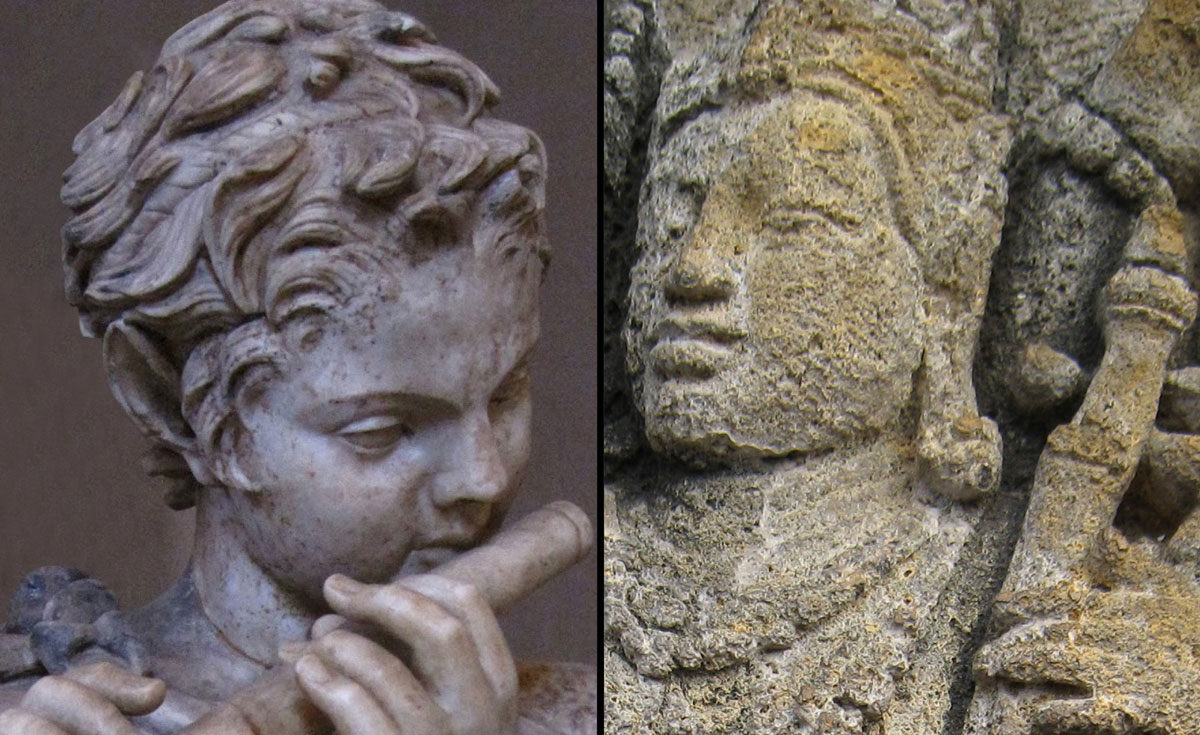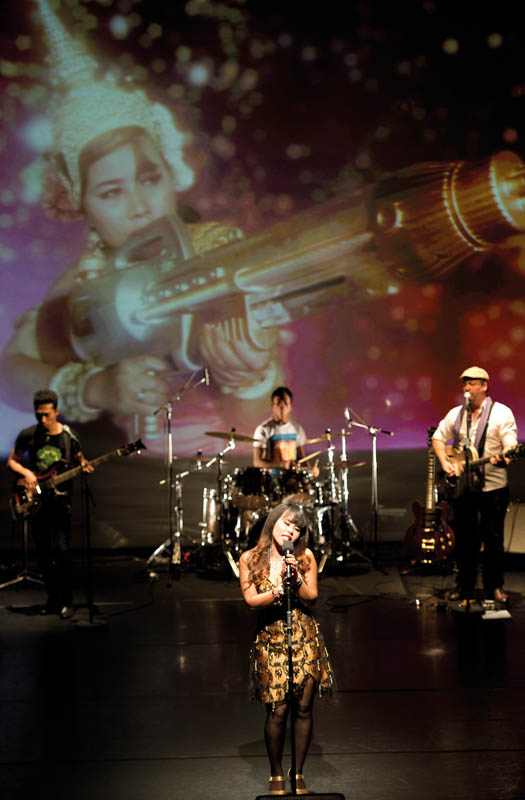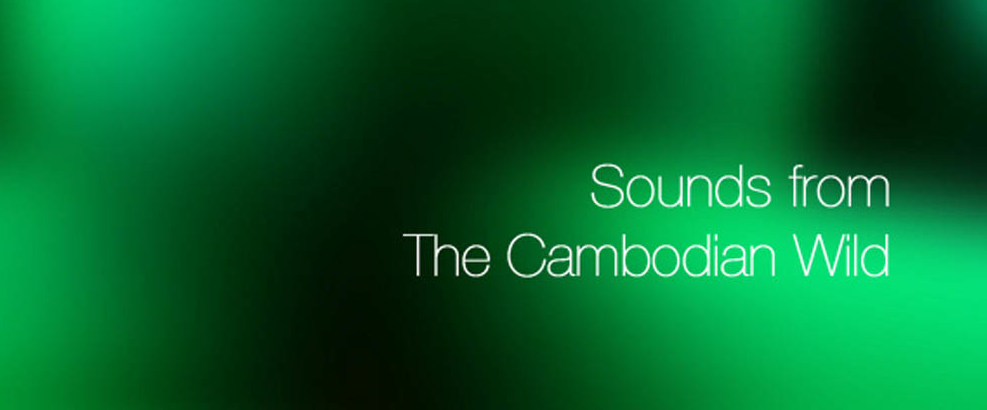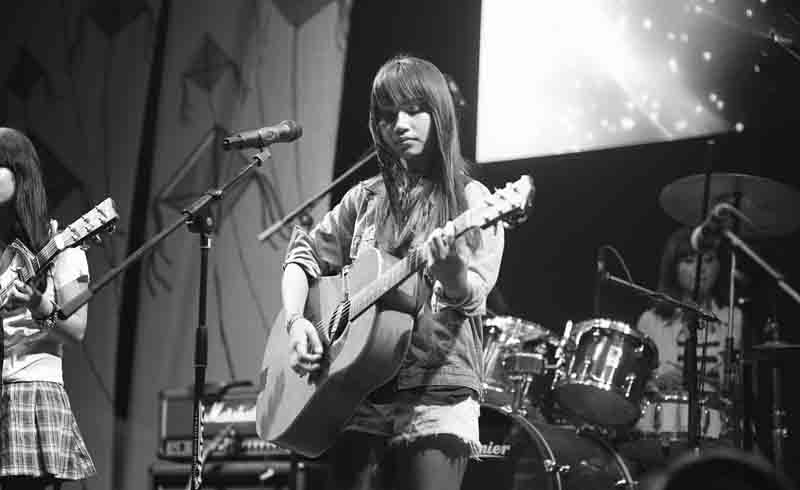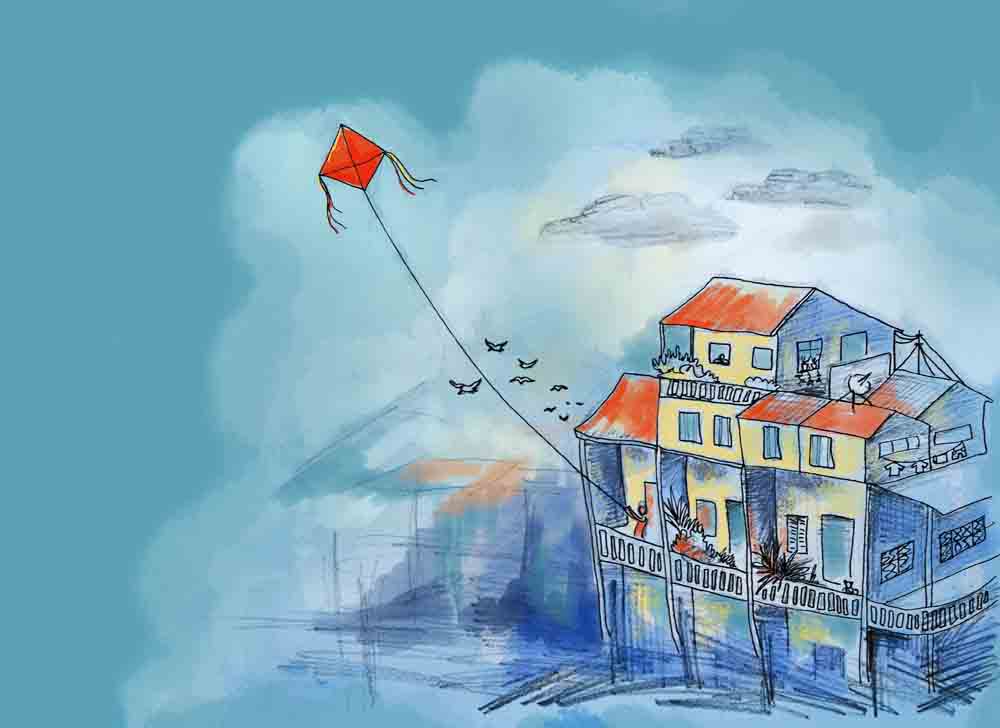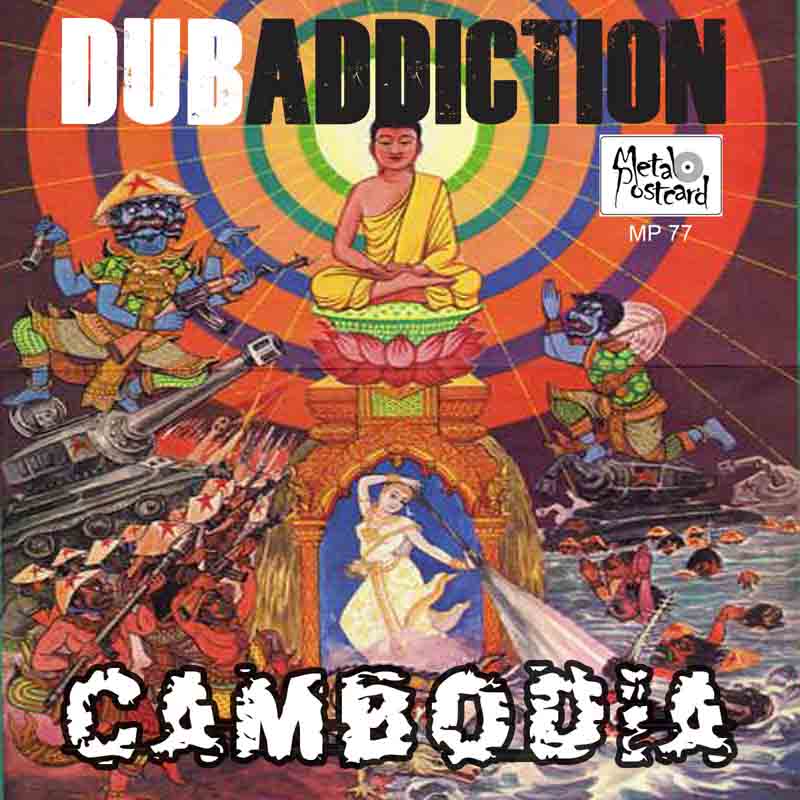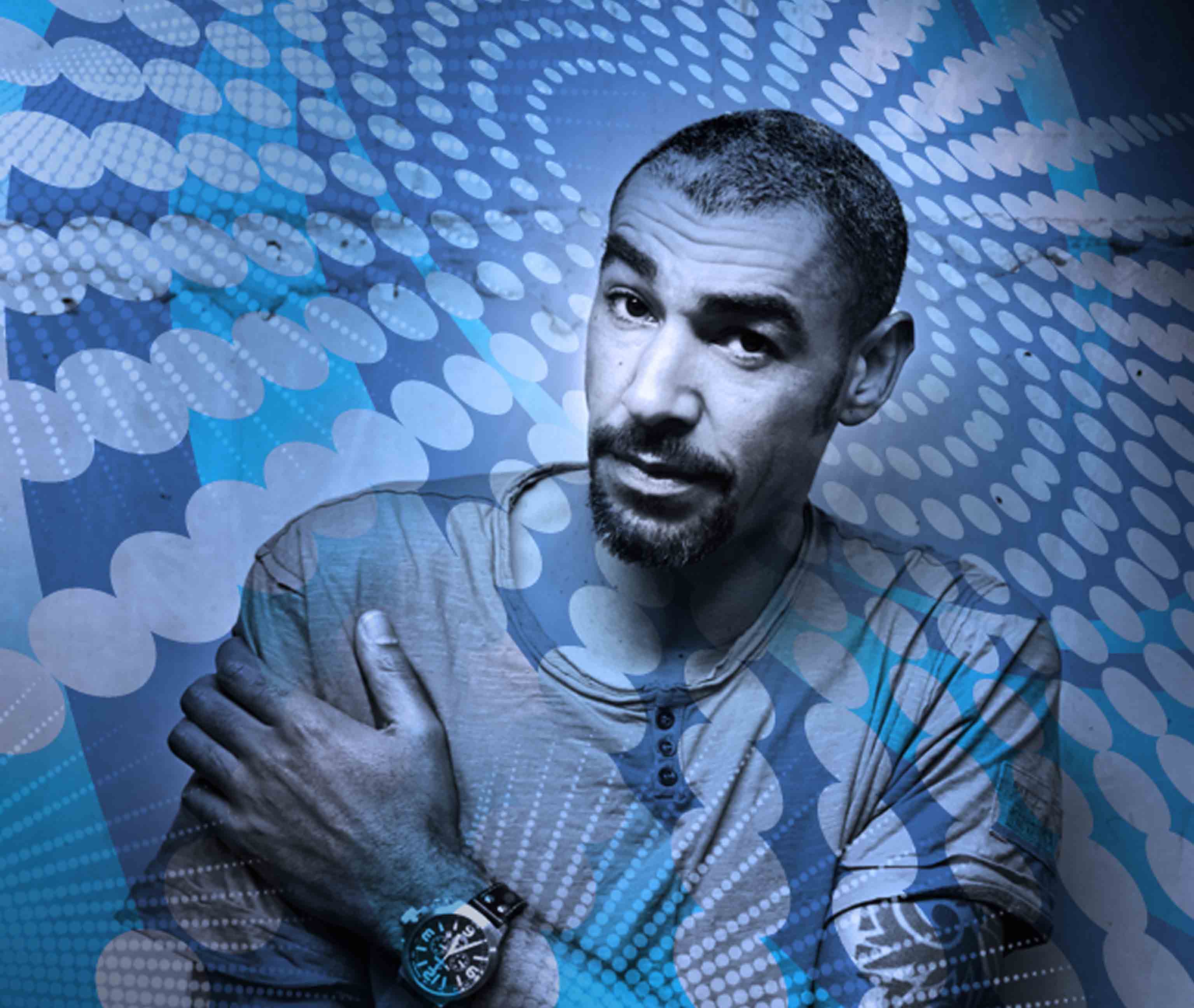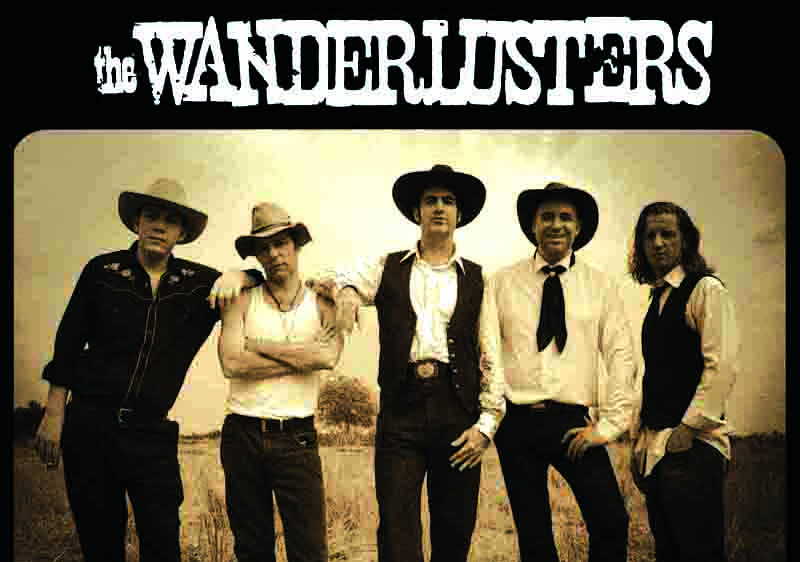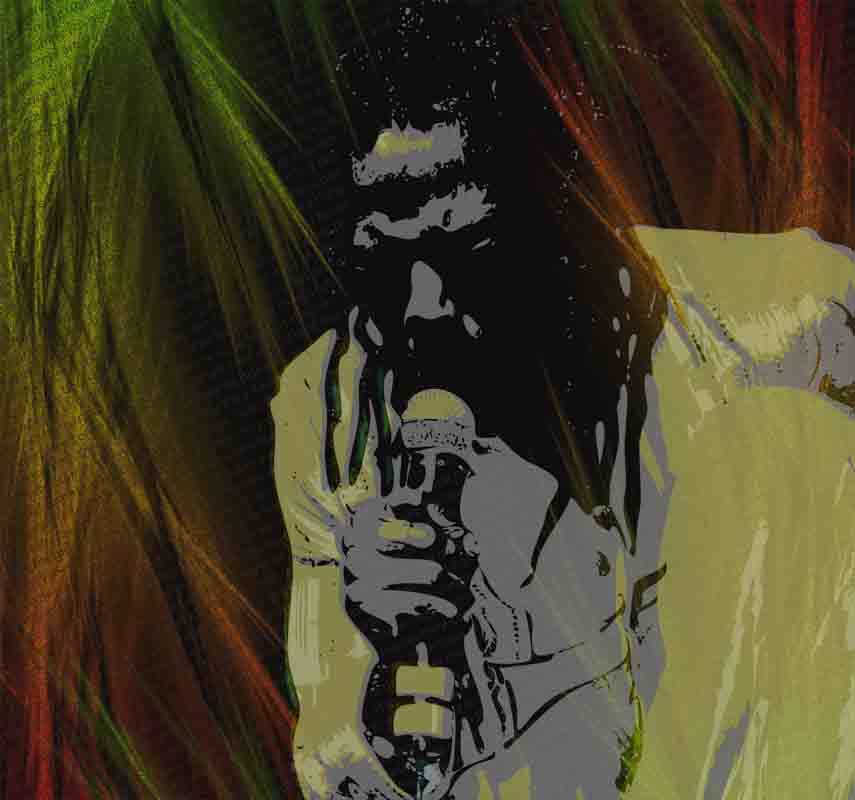Brows furrowed deeply in a scare-mask of furious concentration, the diminutive drummer – eyes flicking first to the singer then to Malaysian master drummer Lewis Pragasam, beating perfect time in the air with two drum sticks – is barely visible among the sprawling red collection of snares, kick pedals and cymbals. Dwarfed by the kit, she – yes, SHE – is apparent only from the wooden blur arcing high in the air before being brought crashing down on tight skin in an almighty roll of artificial thunder.
Alexta, better known as ‘Alex’, is an impressive young Cambodian whose presence commands rather more attention than her physical stature might otherwise suggest. Fiercely vocal on subjects political and social, she retreats into a whisper remembering the glory days of pre-Pol Pot Cambodia, when women wore their hair high in oh-so-now beehives, rocking their barely there miniskirts to the tunes of West Coast America.
Eyes well, cast to the floor. “Music in Cambodia isn’t the same as it was before the Khmer Rouge. I want my country – and my country’s music – back to what it was before, like Sinn Sisamouth. Looking back, we were so proud! Look back, girl!”
Clad in androgynous T-shirt and jeans, in the cushion-lined attic studio at Ragamuffin House, Alex, of all-girl group Count Us In, is one of Ragamuffin’s ‘Songkites’ – a growing army of impossibly talented, impossibly young Khmer musicians completing their very first, all-original album. In short, this ever-raucous band of future pharmacists, doctors, engineers and business gurus – in addition to being outstanding academics – are also the precedent setters for a new generation of Cambodian creatives.
Here, in the collective embrace of creative arts therapists Euan Gray (saxophonist, frontman of The Rooftops, made in Australia) and Carrie Herbert (songwriter, made in England), Ragamuffin is nurturing the quite literal creation of tomorrow’s headline acts: from songwriting to recording to releasing to touring, each Songkite is carefully being schooled in the art of becoming a star. Which, given the quality of their first collective effort, isn’t as out there as it might sound.
The album moves with focused but fluid energy from barefoot-in-the-sand ukulele lilts to hauntingly stirring solos on the tro, a traditional two-stringed Cambodian violin that weeps and wails like a mother in mourning. The Songkites sing, in English and Khmer, of love, loss, life. Things that move them. Things that inspire them. Things they hope this country could one day be again.
Generation One, which Ragamuffin hopes will be the first of many, make their stage debut on Koh Pich (Diamond Island) this weekend. Songkites v. 1.0 – namely Propey, Soria Oung, Alexta Kava, Sentosa Mam, Nikki Nikki, Kan Pich, Jimmy Kiss, Syra Run, Peitu, Nikki Chillzz, Panha and Yorn Young – includes everyone from exceedingly rare female bass players to the progeny of genuine Golden Era rock gods. Says Ragamuffin: “The name ‘Songkites’ is inspired by Cambodia’s famous musical kites, Kleng Ek, which produce melodic tones as they fly. We imagine each original song here as a ‘songkite’ – released and flying free with the songwriter holding the string.” Miss at your peril.
WHO: The Songkites
WHAT: A new generation of Cambodian songwriters
WHERE: Koh Pich (Diamond Island), behind City Hall
WHEN: 6pm March 16
WHY: Come, let’s fly a Songkite!
Artwork by Rachel Faller.

Panha
Marry You In Our Dreams
This is a song I have always wanted to sing; I want to make an album about my life – and I can do it at Songkites. I had many ideas before, but I didn’t know to realise them. I’ve often thought about suicide and I know this is a feeling many artists feel in their hearts. But now I feel I can do anything! I have really improved. My song paints a motion picture in your mind about Cambodian teenagers. Mostly, they are really busy – they have their dreams, they have their own loves, and they want to get married but they cannot because they need money, they need a job, they need to study… We might not be able to get married in reality, but nobody can put our hearts in jail and we can get married in our dreams. And even though we may be far away from each other, we can still love each other as though we were close. If we talk about our country, there is a lot of sadness in Cambodian history and sometimes in my life, so with what little time I have I want to be happy and sweet. I don’t want to meet bad people, but if I meet them I will tell them to be happy and positive and share the love. I’m inspired by many artists around the world, including Charlie Chaplin, who came here in 1932 just for one day. My dream is to be a filmmaker, like my grandfather. He produced only one film, but he knew immediately after that first film that he wanted to make a second, but he couldn’t because the Khmer Rouge came. They destroyed everything: his tools, his human resources. He sold many cars and houses to make his film. After the Khmer Rouge, he tried to hide everything about his story, so the people in my generation don’t know about him. When I used to go to sing on stage, he always said to my mum: ‘You must not do this to your son! You must make your son not be a singer or an artist.’ But I still do it! And now that he is old, he understands. He is happy for me. I told my family that we have one artist already and now I am an artist too. They talk a lot about me; even my parents were never happy when I went on stage. Before, when I won second prize in a national competition, I couldn’t tell them at first. When I finally invited them to see me perform, my father said nothing, but my mother later told me: ‘Your father is very excited and he has called many of his friends to invite them to watch you!’ Now, he understands too. I have two dreams: one is for my family, one is for me. The dream for my family is for me to be a businessman, which I think could be a good influence on the next generation in Cambodia. For my wife and son, for example: if I am just an artist and don’t have any money, I cannot do anything for them, but if I have a business I can have money and I can raise my children and live with my lovely wife, and I can still live my dream by making lots of music in Cambodia. Here at Songkites it’s not about money, it’s about love. Even before Songkites I planned to make an album, but all I had was draft songs. I always lied to my friends: ‘The finished one is coming soon!’ I called many people to ask for help, but it never happened. Now, I have found the right people at Songkites and we all share the same goal. I tell my friends: ‘Don’t fight with each other. We need to find the right way to follow our dreams.’ We compete with each other to make something better: I learn from Euan then Euan learns from me and then we create something new together. There is a lot of ways to create new things!”

Jimmy Kiss
Baby I’m Sorry
I’m the guy who has curly hair – and it’s natural! [Laughs] I love rock and the rock style. I want to be a rock star, but rock is too hard for Cambodia. I’m a tour leader and I take customers around Cambodia, so I get to test the feelings of Cambodians across the country. Everywhere I go, I take my ukulele and make music with people. Everyone likes it so much! ‘What is that guitar? Why is it so small?!’ The girls always come and sit close to me; they really like it! [Laughs] With rock music, you need power; you need to be strong, but in Cambodia people are nervous when you act strong because they don’t have enough food. If you don’t have enough food, how can you jump up and down? You cannot jump without power; without energy. When you go to the countryside, there’s not much food; there aren’t many clothes. Where’s the happy feeling? They cannot feel it. That’s why, in order for songs to be successful in Cambodia, they cannot be happy songs, but sad songs – if you sing about your broken heart, your sorrow – people can understand, because that’s how they feel right now. For now, my favourite style is rock but my songs are sad. I was born into a family that wasn’t rich or poor, but I have lots of relatives who live in the countryside. I lived with them for 18 months so I could experience what they feel when they don’t have food. Hungry! And how does it affect your song when you’re hungry? I meet many people from around the world who seem to have everything – new houses, new cars – and that creates energy, but Cambodians, they are still nervous. Panha’s story is really touching because his father and my father were the same thing: his father made films; my father was a rock star, Vor Sarun. The first time we met, Panha already knew everything about me! My father used to sing like: ‘WOOOOOWWWW!’ [starts clicking fingers then erupts in a textbook rock-star screech]. And his hair was really big too! All the TV stations in Cambodia know my father and people abroad invite him to go overseas to perform all the time, but he won’t. Some of his friends from the US came here and he went to karaoke and sang his own songs! He says to me: ‘If you’re going to sing, you must be number one!’ He was a very famous singer in the past, but he had to burn all his photos, cut his hair, put a lot of dirt on his face and clothes and stop washing in order to make a bad smell – all to stay alive, otherwise he would have been killed by the Khmer Rouge. They said rock was not good for society. Things will change. Something will happen… [Propey chimes in: ‘That’s what we’re waiting for!’] I’m kind of a jungle man. Jimmy the jungle man! I was born in Phnom Penh, but my parents – thank god – they gave me freedom. It was a really lucky time. I could do all the things I wanted to do. I went to the jungle alone with my first big bike. It broke down, so I started walking with my guitar. I found a Khmer Rouge family there, in the jungle: the father had been quite senior before. At the time, I didn’t feel scared. They came over to talk to me: ‘Hey, guy. Where are you going?’ With a gun in his hand! I told him my bike was broken and I didn’t know how to fix it. ‘You can stay at my home. I cannot fix your bike now because it’s too late at night.’ I said: ‘I would like to be friends with you. Is that OK?’ ‘Yes! Come, come!’ I went with him and there were many kids in his family. Everyone was so friendly. Since that time, I have felt like that place is my homeland because I had so many experiences with them. There’s an old pagoda there which is like heaven. In the morning, there is fog everywhere and the animals have real freedom with the monks. They’re not scared. The monks bring out food and deer, wild pigs, monkeys and everything come. It’s amazing! Then a few months later some guy wanted to build something there so they killed all the animals. I felt so angry. I decided to come back to Phnom Penh to get a job. People are born and people die, so before I die I know I have to do something that’s good. It’s time for me to be a musician – and now I’m with Songkites, the right people in the right place! If you’re with the right people in the right place, the right song will come too… When I’m on stage, it’s not about money; it’s about love. When our Songkites videos got more than 100,000 hits on YouTube within three days, that’s love! One more thing that Songkites has given me: I’m now in Dub Addiction, a very famous band in Cambodia, and we plan to make music around the world. The real dream is coming!

Propey
Journey of Heart
Before Songkites, it was really hard for me to put a new song together; it would take months. Now Euan and Carrie have taught us some techniques that help me make songs a lot faster – it’s really easy to compose now. I rarely sang pop before; I always went for pop-punk, like my band The Anti-Fate. It was totally strange and new to me, but I had a concept and Euan helped me to figure it out. My new song is all about love! Us rock stars, we’re always in love… [Laughs] I’ve been in love with this girl for a year and a half. She’s a fan of Anti-Fate and she’s one of the Cambo Headbangers Facebook group. One day, we talked a lot about life. We helped each other when we had problems and then one day I fell in love with her. Too bad she had to move to France, but I’m still waiting for her, so I composed this song to let her know I love her. When you love someone so bad but you have to be apart from each other – and I’m not sure whether she’s going to come back to see me or not or if I could go there to be with her – I just want to express my feelings. I know I’m a daydreamer. I want to release my first album in Khmer and English and then I want to do the same with Anti-Fate. In my experience, some Cambodians will judge me if I compose a song in English, but most people will support you because they really want to hear new Cambodian singers, not just copies or translations. Especially something new and weird! [Laughs] My family doesn’t know about my music. They’ve seen me carrying guitars and stuff, but they never ask; I want to surprise them when I have something in my hand to show them. The last time they saw my picture in The Advisor, my dad said to my mum: ‘He looks similar to our son!’ [Laughs] Mum asked my cousin: ‘Is that my son?!’ And my cousin looked at the picture and said: ‘Yeah, that’s him!’ [Laughs harder]

Alexta Kava
I Still Love You
I love pop and pop rock, a lot of American and English music. Music in Cambodia isn’t the same as it was before the Khmer Rouge. I want my country – and my country’s music – back to what it was before, like Sinn Sisamouth. Looking back, we were so proud! Look back, girl! What we’re doing musically now, here at Songkites? Even if it’s not good, at least it’s ours! My dad’s a dentist, but he loves guitars. To begin with, he wouldn’t allow me to join the music scene in this country. In my band Count Us In, which is all girls, we have a dentist, a pharmacist and an engineer. We will complete our studies and make music; we can’t live without either. I love music and I do it with my heart – it’s not just about money – but study first. How do I feel on stage? Be confident! Show people what we can do! And ROCK IT! Before I knew how to play music, if I had free time I would get bored: sleep, watch TV. Now that I play music, my friends and I can all rock together. It’s better than being alone. I get inspired by everyone around me: first my lover then my parents, my friends. Not many girls in Cambodia play drums. Here, girls are expected to dance like this… [Twists and turns hands in the style of an Apsara dancer then pulls a face]. It’s traditional: we must walk slowly; speak quietly. BOOOORING! [Laughs] I will never forget our traditions – I adore them – but I love playing the drums. Many older people don’t support me; they say I’m crazy, or a boy. But look: boys can do this, but girls can too! Nowadays, women can do anything men can do. Together, we can make change. We’re the first girl band in Cambodia, Count Us In, and we’ve been together for two years now; we’re best friends. And here at Songkites, everyone helps each other, which makes us all better. It’s like heaven. I want to live in the studio!

Kan Pich
Who I Am
I love being who I am: I just love music and I love singing. I’ve had a dream since I was a young boy – I felt that I could be famous. I was just dreaming and didn’t expect much, but I feel happy with what I can do. I didn’t expect this would happen to me so fast, that I would be part of something like Songkites. I made an original song by myself, which before was only a dream, but now it’s happened. I still don’t know: is this reality or am I dreaming? When I wake up in the morning I have more energy because I have set foot in the place I only dreamed about before. I might not be very successful yet, but I am living my dream. I think that in the future Cambodian musicians will show their work to the world and the world will admire it, admire that Cambodian people can do it. I have no magic to change the world, but I can change myself to be an example, to influence people. The most important thing is educating people through my lyrics and my music – I teach them about life. You cannot go to people directly and say: ‘You have to do this! You have to do that!’ [Wags finger] In order to change people, you don’t have to rule them violently. You can try to educate them in a very smart way; a very gentle, entertaining way. I can’t live without music! When I perform, the feeling is indescribable. You’re not pretending; it comes from deep inside your heart. Lyrics are really inspirational, so when I’m singing it’s like I’m telling myself to stand; to show people I have to be strong. The lyrics give me the ability to express that and I feel excited, so I perform in a very excited way. What support does my family provide me? My dad doesn’t act like he supports me 100% because he’s afraid I will lose something if he supports me to work in the entertainment industry; I will lose my knowledge, which would affect my long-term future. He wants me to wear a jacket and a tie or work with very high-ranking people; be their assistant. [Wrinkles nose] But that’s not me! I would rather be one who finds my own creativity than the one who’s taking someone else’s words and repeating them. I have worked with high-ranking people before, but there is always a gap in the conversation because they think your education level is lower than theirs. Here at Songkites, there are people waiting to support my speech all the time. It’s the peaceful world I’ve always dreamed about living in: there is no competition, no violent arguing, no fear of being here.
